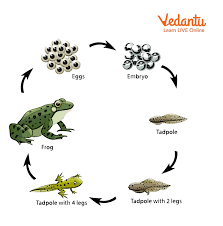Living Creatures: Exploring their Characteristics – Class 6 Science Chapter 10: Important Questions and Answers FREE PDF Download
FAQs on CBSE Class 6 Science Important Questions Chapter 10 - Living Creatures: Exploring their Characteristics
1. What are the key characteristics of living creatures in Chapter 10 from Class 6?
Chapter 10 highlights growth, reproduction, and the ability to respond to their environment as the main traits of living creatures. It shows how these traits help them survive. Understanding these characteristics is important in science.
2. How do plants and animals differ in Chapter 10 of Class 6 Vedantu?
The chapter explains that plants make their food through photosynthesis, while animals need to eat other living things. Plants usually stay in one place, but animals can move around. This helps us understand how they live in different ways.
3. What are vertebrates and invertebrates according to Chapter 10 in Class 6 Science?
Vertebrates are animals with a backbone, like mammals and birds. Invertebrates, on the other hand, do not have a backbone, such as insects and jellyfish. This classification helps us study animal life better.
4. Why are habitats important for living creatures in Chapter 10?
Habitats provide living creatures with food, shelter, and a place to reproduce. Different habitats, like forests or oceans, support different types of life. Understanding habitats helps us see how organisms interact with their environment.
5. How do adaptations help living beings survive, as discussed in Chapter 10?
Adaptations are special features that help creatures live in their environment. For example, camouflaged animals can hide from predators. The chapter shows that these traits are important for survival.
6. What is the role of reproduction in living organisms mentioned in Chapter 10?
Reproduction ensures that living creatures can produce offspring, allowing their species to continue. It can happen in different ways, like through seeds in plants or eggs in animals. This is essential for the survival of species.
7. What examples of adaptations are discussed in Chapter 10 of Class 6 Science?
The chapter gives examples like a cactus having thick skin to store water and a polar bear's thick fur for warmth. These adaptations show how organisms change to fit their environments. Understanding these helps us learn about nature.
8. How do living organisms respond to their environment in Chapter 10?
Living organisms react to changes in their environment, like moving towards food or escaping from danger. This ability to respond is vital for survival. It shows how they interact with everything around them.
9. Why is curiosity about life forms important, as stated in Chapter 10 of Class 6?
Curiosity helps us explore and learn about the different creatures in our world. Understanding living things can inspire us to care for the environment. It encourages us to ask questions and seek knowledge.
10. How does Chapter 10 relate to Class 6 science learning?
Chapter 10 is important for Class 6 students as it lays the foundation for understanding biology. It covers basic concepts about living creatures that are essential for future studies. This knowledge is key in science education.
11. What is the significance of classifying living organisms in Chapter 10?
Classifying living organisms helps us organize and study them better. It makes it easier to identify different species and understand their relationships. This is a vital part of learning in science.
12. How can students explore the concepts from Chapter 10 of Class 6 further?
Students can explore Chapter 10 concepts by observing plants and animals in their surroundings. They can also engage in projects or experiments that highlight these traits. This hands-on learning deepens understanding.
13. How does Vedantu support learning about Chapter 10 in Class 6 Science?
Vedantu provides resources and guidance for Class 6 students studying Chapter 10. This includes important questions and interactive lessons to help with understanding. Students can benefit from expert teaching to clarify concepts.

















